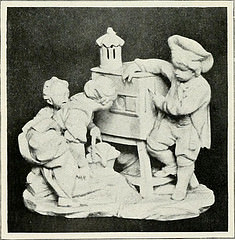3D Printing Technology: The Future of Printing
For more than a decade, engineers and designers have been using 3D printers to quickly produce prototypes before they give factories the go-ahead to manufacture the real thing in bulk. Today though, with 3D printers becoming more sophisticated, more high-tech, it is not just in the field of engineering and design where 3D printing technology is making its mark. In the future, it is predicted that this form of additive manufacturing technology will become a standard in the fields of medicine, architecture, jewelry, geographic information systems, automotive, and aerospace.
3D printing basics
Wikipedia defines 3D printing as “a form of additive manufacturing technology where a three dimensional object is created by laying down successive layers of material.” Compared to other additive manufacturing technologies, 3D printers are said to be easier to use and more cost-effective.
With regards to methods, producing a 3D object from digital data can happen through:
Melting material to produce layers (SLS, FDM)
Using liquid materials that are then cured to manufacture the 3D object; and
Printing thin layers that are cut to shape then molded together.
Needless to say, there are pros and cons to each method and the decision to team up with a company that offers 3D printing will be dependent on specific factors such as cost, choice of materials, speed, and color capabilities.
3D printing applications
As implied, several industries are keen on tapping 3D printing technologies to manufacture products that might otherwise be expensive to produce using other additive manufacturing technologies. In the field of biotechnology for example, 3D printing might hold the key to several tissue engineering applications including the production of organs and body parts for patients who have been in an accident, have undergone surgery, or are naturally born with defect/s. 3D printers may also be used in archaeology and paleontology, as well as in forensic pathology, where a damaged piece of evidence can be reconstructed using any of the methods mentioned above.
Of spare parts and intellectual property rights
If 3D printing becomes more widely used, companies can cut costs importing specialized parts or customized components, especially if they can just manufacture these themselves. No more setting up of factories when products can be mass produced using an industrial 3D printer. On the downside, ideas can now be copied even more rapidly as the goods can be printed straightaway and at cheaper costs. How this factors into IPR battles is something that we can all look forward to. In the meantime, it is safe to say that the future of 3D printing technology remains promising not just for businesses but also for consumers.
Christine de Guzman Writes for StandoutGraphics.com, The idea behind the core services at Standout Graphics is to provide innovative ways to deliver traditional advertising methodologies to engage the intended viewers at a deeper level of interaction.To knwo more about 3D printing services, please visit us at StandoutGraphics.com
[youtube http://www.youtube.com/watch?v=OYqBxEAtXZA&fs=1&rel=0]
A Chinese company is using 3D-printed blocks to build cheap and quickly assembled houses as a possible solution to the urgent problem of modernizing housing …
Video Rating: 4 / 5
